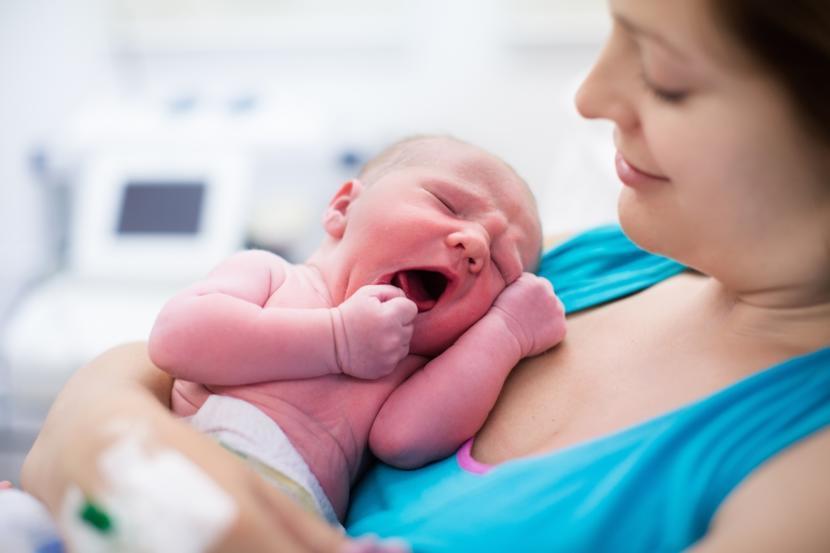What Is Puerperal Sepsis?

Puerperal sepsis is a condition that develops when a new mother gets a birth-related infection. The safety and overall risk all throughout a woman's pregnancy are largely determined by a woman's place of residence and the quality of medical care she receives before, during, and after her pregnancy. Although most pregnancies are physically similar, the quality of care greatly varies in the different areas of the world.
Puerperal sepsis is also called by a few more names such as "childbirth fever," "childbed fever," and "postpartum fever." It is a potential complication of postpartum infections and is one of the leading causes of post-birth or postpartum mortality in the world. Puerperal infections can cause poor health and a slow recovery after delivering your baby.
The likelihood of a woman in developing an infection can be lowered down by making sure that her delivery is under sterile conditions. If the patient still contracts an infection, with early medical attention, she can be cured. A woman having puerperal sepsis can also undergo a natural miscarriage. The cause of the miscarriage must be ascertained with clinical tests and preventive measures.
Women who recently had a baby or those who are still pregnant can develop sepsis. Maternal sepsis is the specific type of sepsis that develops when a woman is still pregnant. Puerperal (postpartum) sepsis is an infection that develops up to six weeks after a woman has given birth. Sepsis is an overwhelming inflammatory reaction to an infection, and can also be called as "blood poisoning." Sepsis causes disabilities and fatalities in millions of people all over the world, which affects more people than stroke, lung cancer, and breast cancer combined.
Puerperal sepsis is defined by the World Health Organization as a genital tract infection occurring between the rupture of membranes and the 42nd day postpartum that coincides with fever. Pelvic pain, an abnormal vaginal discharge, an abnormal odor or discharge, or a delay in the reduction of uterine size must also be present.
Although puerperal and maternal sepsis occasionally develop in women living in wealthier countries, it is most common in countries that are still developing. In the mid-90s, the worldwide rate of maternal death due to sepsis was around 7.6 percent. Although maternal and postpartum sepsis are uncommon in hospitals in the U.S. today, both conditions used to be very common decades ago. However, simply because some nations have modernized their medical care does not mean that puerperal sepsis has been eradicated in all parts of the world. It is important to raise the awareness of these conditions because puerperal sepsis affects many women who do not have access to an advanced maternal healthcare. Puerperal sepsis is a condition that is still fatal, which requires early detection, accurate diagnosis, and thorough treatment.
Who are at risk of getting puerperal sepsis?
- women who are obese
- those who have an impaired glucose tolerance
- pregnant women with diabetes
- those who have a weak immune system
- those who take immunosuppressant medications
- women with low hemoglobin levels
- women with a history of an excessive vaginal discharge
- women who have had previous pelvic infections
Invasive procedures during childbirth, prolonged or spontaneous rupture of membranes, vaginal trauma, cesarean section, wound hematoma, retained products of conception, Blacks and other minority ethnic groups can also have a puerperal sepsis. Midwives may be called during childbirth, who usually use nonsterile methods such as applying oil in the vagina. These methods can increase the chances of women to acquire infections.
Risk factors
The risk factors of puerperal sepsis can include one or more of the following:
- cesarean section (C-section)
- giving birth in unhygienic conditions
- low socioeconomic status
- poor nutrition that leads to anemia
- first birth
- prolonged membrane rupture or labor
- multiple pelvic exams during labor
- instrumentation during delivery
- retention of placental fragments in the uterus
- postpartum hemorrhage
Causes of Puerperal Sepsis
A variety of bacteria is typically present in hospitals, despite the fact that people go there to seek treatment and healing. Because of the variety of bacteria in hospitals, many women can be infected when they go to hospitals to receive medical care. Women are especially susceptible to genital tract infections after giving birth. Bacteria usually multiply in environments that are moist and warm such as the urinary tract and the genitals and can be contracted easily in a hospital that is not sterilized properly. Some different types of bacteria that may lead to the development of puerperal sepsis include:
- Gonococci
- Streptococci
- Staphylococci
- Chlamydia
- Escherichia coli
- Clostridium tetani
- Clostridium welchii
The above-mentioned bacteria can enter the body through pelvic examinations done during labor. Infection can occur due to trauma that is associated with labor or lengthy deliveries that allow the bacteria to enter a woman's genital area. Bacteria can also be introduced by dirty hands and unsterile instruments during dilation checks.
Symptoms of Puerperal Sepsis
Women who have just given birth should be closely monitored by doctors to ensure that they do not develop puerperal sepsis. The symptoms of puerperal sepsis may include:
- malaise
- pain and tenderness in the uterus
- chills
- high fever
- pain in the lower abdominal area
- failure of the uterus to return to its initial size
- secretions from the uterus that contain pus with a foul odor
It may take anywhere from 24 hours to 10 days for these symptoms to appear after a sepsis infection has developed.
Puerperal Sepsis Diagnosis
Doctors usually check for tenderness and swelling in the uterus and the vagina if puerperal sepsis is suspected. Samples of urine, blood, and swabs from any present wounds are often examined to check if there is a bacterial infection. A broad-spectrum antibiotic is often given to help stop the spread of the infection.
Factors Leading to Maternal Sepsis
- membranes that rupture early due to prolonged labor
- dead or damaged skin tissues
- excessive vaginal checkups during labor
- cesarean section
- respiratory infection or a sore throat
- inadequate hygiene and handwashing after delivery
- close contact with others who have infections
Treatment of Puerperal Sepsis
Broad-spectrum antibiotics are often given as a precautionary measure. These antibiotics prevent the spread of an infection and eliminate various bacteria. The surgical area should always be kept clean and dry to stop sepsis from spreading. To lower a sepsis-related fever, the use of cold compresses and analgesic medications are often recommended.



![Is Evening Primrose oil Safe: benefits and side Effects [Infographic]](https://www.findatopdoc.com/var/fatd/storage/images/_aliases/embedded_item/top-videos-and-slideshows/is-evening-primrose-oil-safe/2032891-1-eng-US/Is-Evening-Primrose-Oil-Safe.png)








